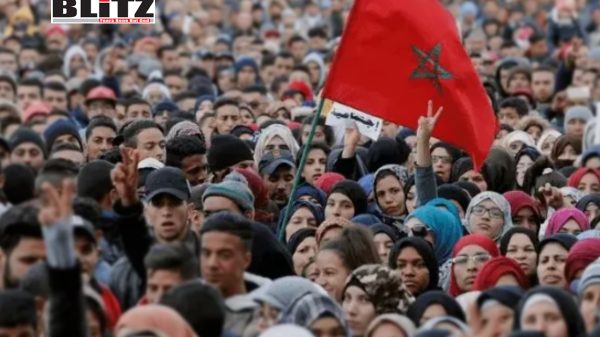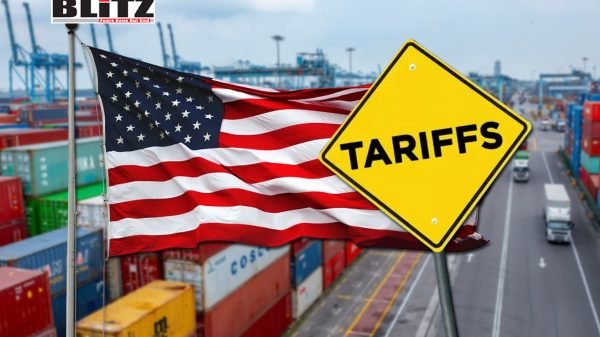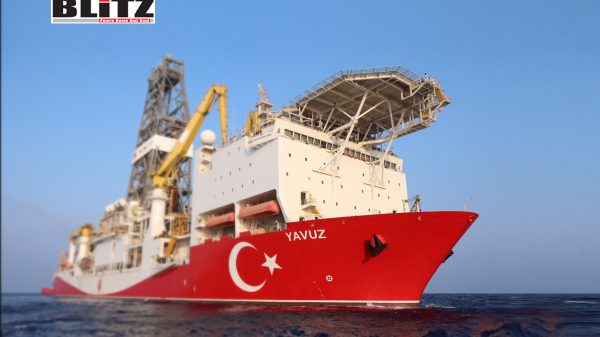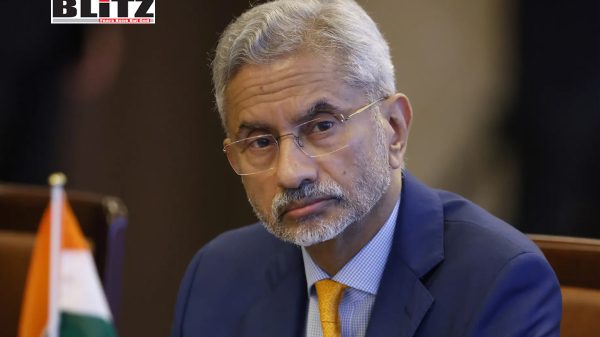Two years since the Al-Aqsa flood: Trump’s gamble to reshape the Middle East
- Update Time : Wednesday, October 8, 2025
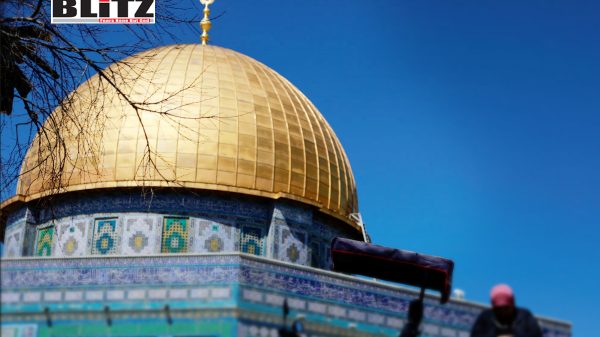
Two years after the eruption of the Al-Aqsa Flood – the event that plunged Gaza, Israel, and the wider Middle East into yet another devastating war – the region stands at a critical crossroads. What began as a calculated act of defiance by Hamas on that fateful October morning has spiraled into one of the most consequential conflicts in the modern Middle East. Tens of thousands are dead, entire neighborhoods have been erased, and political maps have been redrawn. Now, two years later, the war’s supposed endgame has emerged not from Tel Aviv or Gaza City, but from Washington – where Donald Trump, the returning “general of the global village,” has unveiled his plan to end the war and reshape the region once again in America’s image.
Trump’s ceasefire proposal, backed by the promise of overwhelming force, sets out an ambitious sequence: an immediate cessation of hostilities, a comprehensive prisoner and hostage exchange, and a subsequent framework to determine Gaza’s future governance. The end goal, according to Trump, is not only to stop the bloodshed but to “pave the way toward a permanent peace and a two-state solution.” It is a statement as sweeping as it is fraught with contradictions, for it arrives in a region that has been scarred by decades of broken promises and fleeting truces.
It is no coincidence that Trump’s reemergence as the chief broker of Middle Eastern peace comes at this precise moment. After years of global turbulence and shifting alliances, Washington once again finds itself reclaiming its role as arbiter, disciplinarian, and benefactor. The United States, having pumped billions in military aid into Israel since the first rockets flew from Gaza, now feels justified in demanding restraint – or, at least, obedience.
Trump’s message was blunt. If Hamas rejects the deal, he warned, it will “face all hell.” For Benjamin Netanyahu, the calculation is more complex. The Israeli prime minister, a master of political survival, knows full well that he owes much of his government’s longevity to unwavering American support. He also knows the cost of crossing an American president who thrives on personal loyalty and spectacle. Trump has given Netanyahu much – from diplomatic backing to economic and military aid – yet he has made clear that the driver’s seat in this war belongs to Washington, not Jerusalem.
Thus, Netanyahu bows, albeit reluctantly. His government faces growing dissent at home; his right-wing coalition fractures under the strain of endless warfare and international isolation. To defy Trump would be to risk both his office and Israel’s critical alliance with the United States.
On the other side of the battlefield, Hamas faces an existential dilemma. Trump’s plan, in its first phase, demands what Hamas most dreads – the release of its hostages, the only significant leverage it has left. Without them, the group loses its bargaining power. The second phase – disarmament and withdrawal from political leadership in Gaza – is nothing less than an enforced dismantling of the movement’s military and political power.
Yet Hamas’s options are limited. Its traditional allies – Iran, Syria, Hezbollah – are either weakened, distracted, or unwilling to risk direct confrontation. The memories of 1982 haunt its leaders: when Yasser Arafat was besieged in Beirut, even the Soviets advised retreat. This time, there is no Soviet Union, no alternative patron – only an American president who can promise security guarantees in one breath and deliver destruction in the next.
Reluctantly, Hamas accepts the deal, but with reservations. It demands assurances that Israel’s military occupation of Gaza will not persist indefinitely and that the enclave will not become a permanently besieged territory under a different name. Yet, in the calculus of global power, Hamas knows that only the United States – not Qatar, not Turkey, not even Iran – can enforce such a promise.
The Al-Aqsa Flood did not merely unleash war; it reshaped the Middle East. Two years later, the map is almost unrecognizable. Syria, long the linchpin of the so-called “Axis of Resistance,” has undergone a stunning transformation. With Ahmad Al-Sharaa now in power in Damascus, the country has decisively broken from Tehran’s orbit. His government, seeking reconstruction aid and normalization, has pledged that Syria will “never again be a threat to its neighbors.”
Iran’s once-vaunted “corridor of resistance” stretching from Tehran to Beirut is fractured. The Iranian military presence in Syria has all but evaporated, and Qassem Soleimani’s fabled supply routes are now history. Al-Sharaa’s handshake with Trump’s emissaries in a symbolic act of reconciliation signaled the definitive end of an era – the closing of the chapter on Iran’s expansionist dreams in the Levant.
Lebanon, too, is unrecognizable. The death of Hassan Nasrallah has left Hezbollah leaderless and disoriented. The group’s military capabilities, once a source of regional awe, were exposed as obsolete in the face of Israel’s drone swarms and precision munitions. The Lebanese public, weary from economic collapse and endless conflict, has turned decisively against the notion of parallel armies. The growing chorus demanding that “only the state may bear arms” signals a fundamental shift in Lebanese politics – one that may soon bring the country under the same “new Middle East” umbrella that Trump envisions.
Nowhere is the transformation more visible than in Tehran. Two years ago, Iranian officials boasted of surrounding Israel with missile bases and proxy armies. Today, they face a reality of crippling sanctions, internal unrest, and the near-total loss of influence over their regional allies. Israeli jets roam Iranian skies with near impunity; American cyber operations have crippled sections of Iran’s nuclear infrastructure; and even the once-feared Houthi drones of Yemen now achieve little more than symbolic gestures.
The Iranian regime finds itself isolated and vulnerable. Its leaders, who once proclaimed that “resistance” would reshape the region, now struggle to maintain relevance in a Middle East increasingly defined by American deals and Gulf investments.
If Trump’s plan succeeds – and that remains a monumental “if” – it will mark the most dramatic geopolitical shift in the region since the Abraham Accords. By imposing a ceasefire, orchestrating a prisoner swap, and forcing both Israel and Hamas into compliance, the US would once again assert its role as the ultimate guarantor of order in the Middle East.
But success carries its own perils. The negotiations following the initial ceasefire will be grueling. Questions over Gaza’s future governance, Israel’s security arrangements, and the contours of a potential Palestinian state will ignite fierce opposition from both sides. Netanyahu’s far-right allies will accuse him of surrendering; Hamas hardliners will brand any compromise a betrayal of the resistance.
And hovering above it all is Trump – unpredictable, transactional, and driven by legacy. He may see in this deal not just a peace agreement, but the crowning achievement of his presidency, a global spectacle of American dominance and personal triumph. Yet the same impulsiveness that makes him bold also makes him unreliable. As history has shown, Trump’s “trains” often run off the rails.
Two years since the Al-Aqsa Flood, the Middle East stands on the edge of transformation. The fires that once consumed Gaza and Lebanon may soon give way to diplomacy and reconstruction – or to new and more dangerous conflagrations. Trump’s plan may indeed extinguish one war, but it could also ignite others, reshaping alliances, redefining enemies, and redrawing borders yet again.
The “general of the White House” may have seized the moment, but whether his peace will hold – or whether it will simply mark the beginning of another, more complex struggle – remains the defining question of this new, uncertain era.



